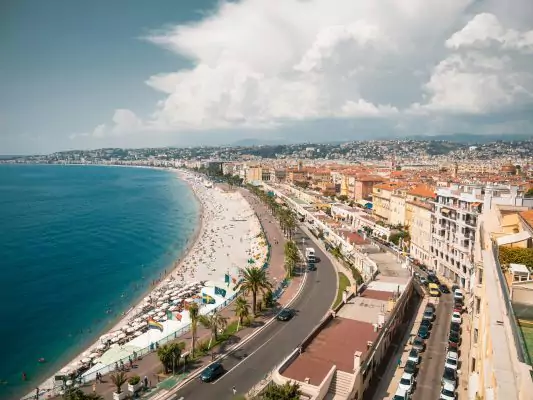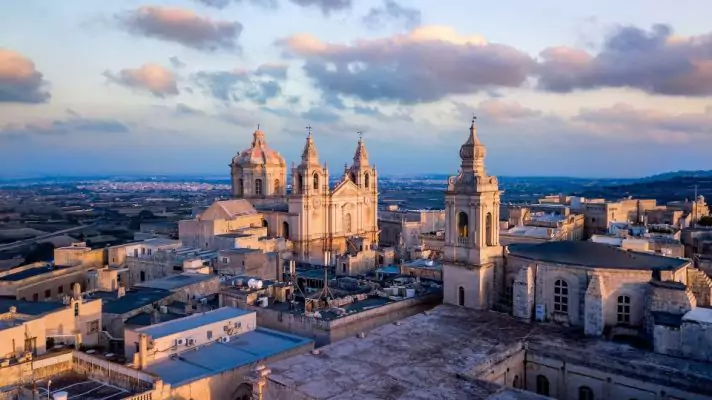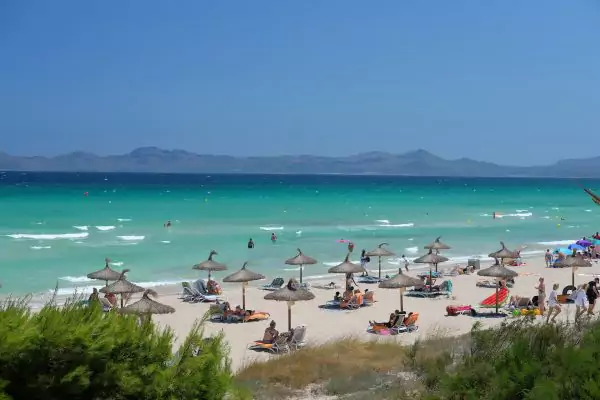Amsterdam 3-Day Travel Guide – What to See and Do in the Dutch Capital

Have a look at our Amsterdam 3-day travel guide and discover the best the city has to offer, including hotels, restaurants, tips to avoid tourist scams and even a detailed list with everything you must see and do in Amsterdam in 3 days.
Intersected by over 150 canals and spread across nearly a hundred islands, Amsterdam is one of Europe’s most popular and recognizable capitals, frequently topping the lists of many travelers when it comes to dream destinations. Regardless, and no matter how pretty and photogenic the city might be (and it is), the true secret of the Dutch capital lies in how many different audiences it appeals to.
After all, can you think of any other European city that caters to such a wide range of visitors? If the local peaceful canals and charming historic buildings are a perfect draw for the occasional city-breaker, its world-class museums captivate art and culture enthusiasts. On the flip side, Amsterdam’s laissez-faire attitude when it comes to soft drugs and its pioneer legalization of prostitution – centered around the famous Red Light District – also make it a hub for party-goers, night owls and bachelor celebrations. That’s the deal about Amsterdam, it’s the kind of place where no two experiences are ever the same!
That being said, we invite you to have a look at our Amsterdam 3-day travel guide and discover the best the Dutch capital has to offer, including hotels, restaurants, tips to avoid tourist scams and even a detailed list with everything you must see and do in Amsterdam in 3 days.
Amsterdam 3-Day Travel Guide

How to get to Amsterdam – Flights from the UK
Given its popularity among visitors and the fact that it’s the biggest city in the Netherlands, it’s only natural that Amsterdam is served by the country’s most important international air hub: the Amsterdam-Schiphol Airport.
As such, if you’re traveling from the UK, it is possible to fly directly to Amsterdam from London–Heathrow (British Airways and KLM) London–City (British Airways and KLM), London–Gatwick (Easyjet), London–Luton (Easyjet), London–Southend (Easyjet), London–Stansted (Easyjet), Birmingham (Easyjet and KLM), Bristol (Easyjet), Edinburgh (Easyjet and KLM), Belfast (Easyjet and KLM), Glasgow (Easyjet and KLM), Liverpool (Easyjet), Manchester (Easyjet and KLM), Newcastle upon Tyne (Easyjet and KLM), Southampton (Easyjet and KLM), Cardiff (KLM), Humberside (KLM), Inverness (KLM), Leeds/Bradford (KLM) and Norwich (KLM). Alternatively, you can fly into other Dutch cities and then reach Amsterdam by either bus or train. In that case, the scope of options is even wider, as you can fly into Rotterdam-The Hague (London-City with British Airways and Edinburgh with Transavia) or Eindhoven (London-Stansted, Edinburgh and Manchester – all with Ryanair).
How many days do I need to visit Amsterdam?

This is one of those cities where “the more, the merrier”! Even so, and despite its universal fame, Amsterdam is surprisingly easy to explore, especially due to the lack of any sort of elevation. In fact, if you want to go local and rent a bike for your adventure, distances will be even easier to cover! That being said, if you take a 3-day city break or a special weekend getaway, you’ll be able to experience the very best Amsterdam has to offer.
On the other hand, if you want to take the opportunity to see more of the Netherlands, such as the lovely towns of Leiden, Delft, Utrecht, Haarlem and Zaanse Schans, or the iconic tulip fields of the Keukenhof Gardens, the more time you’ll obviously need to see it all.
Amsterdam 3-day travel guide – Best time to visit the city
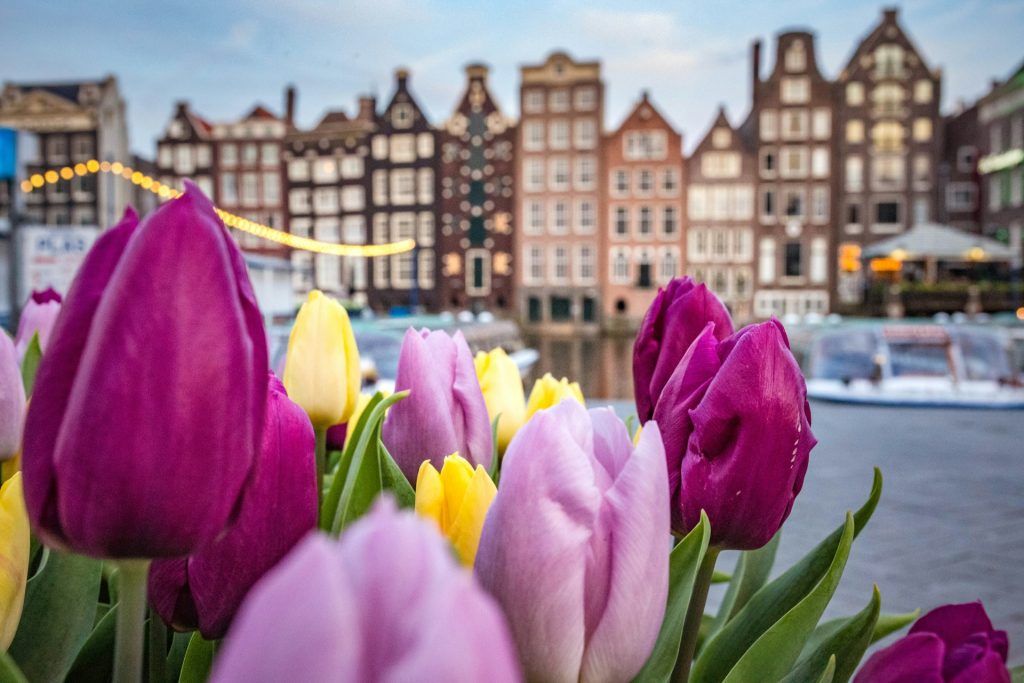
Located smacked in the center of Europe, though its proximity to the sea means temperatures are not as extreme, Spring, Summer and Fall are definitely the most sought-after months when it comes to booking a trip to Amsterdam, with the period between May and September standing out as the most researched. However, keep in mind accommodation can be quite expensive in the Dutch capital, an issue that’s even more prevalent during Summer months!
As such, it’s best to visit during shoulder-season, in the other months of Fall and Spring, when the weather is still quite pleasant, the streets less crowded and the prices slightly smaller. However, and for those who don’t get too affected by the possibility of catching a little rain, visiting Amsterdam in the winter can also feel refreshingly rewarding, as several Christmas markets spring up all around the city.
Documents needed for your trip to Amsterdam
Since the Netherlands is part of the EU, British citizens do not need a visa to visit. You’ll just need your passport, which must have been issued within the last 10 years and remain valid for at least 6 months from the date of your trip.
However, keep in mind that starting in 2025, British passengers will need to apply for ETIAS in order to enter any EU country.
Amsterdam 3-day travel guide – Withdrawals, banking fees and travel budget

With the Euro (€) as the Netherlands’ official currency, any withdrawal using a UK bank card might incur in the payment of several different fees. Besides the percentual fee referring to the currency conversion, some UK banks may also charge a flat commission for withdrawals made outside the UK. In some instances, you may well end up paying 5%-6% of your original withdrawal in banking fees.
On the other hand, exchanging money before your trip is not a viable solution either. Besides not being any cheaper, it’s also not safe or wise to carry so much money on you during your trip. As such, we recommend using the services of online banking fintech companies such as Revolut, N26 or Monzo.
Although each have their own limitations and fees, they allow you to withdraw a certain amount in foreign currency without any fees involved. And even after that threshold is reached, costs are much smaller when compared to traditional banks. Sign up for Revolut for free >> to get 3 months of Premium.
Amsterdam 3-day travel guide – Common scams and frauds
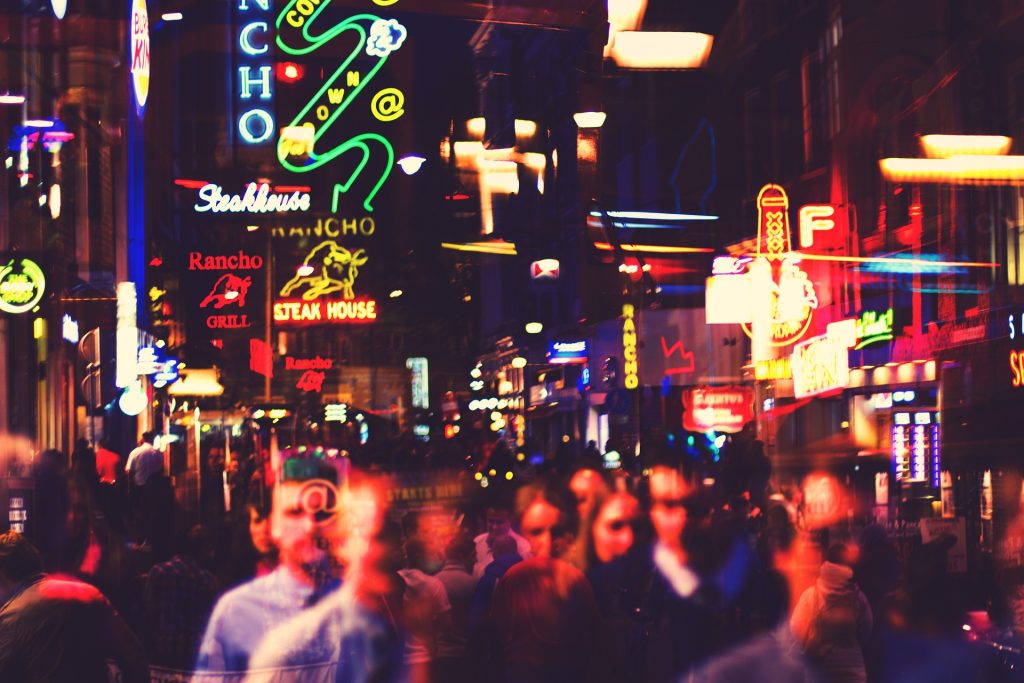
Overall, the Netherlands are an extremely safe travel destination – and Amsterdam is certainly no exception!
However, and much like you would do in any other big city, using your common-sense is key. That means no taxis whose drivers refuse to start the meter, no accepting help from strangers when you’re using an ATM or trying to buy tram tickets and always keeping an eye out for your stuff when you’re walking through busy areas (especially around Central Station). To sum up: don’t do anything you wouldn’t feel comfortable doing in any other city! When it comes to physical risks specific to Amsterdam, we strongly urge you to stay out of the bike lanes. Cycling is a way of life in the Netherlands, and ignoring the rules won’t just frustrate the locals, it could actually also lead to you being hit by a bike. Likewise, if you visit the Red Light District and plan to try out the local services, keep in mind that any form of disrespect will probably lead to a muscled response from private security, who won’t hesitate to put you in your place. No matter what you’ve smoked or how bold you’re feeling, remember these are professionals at work, and certain boundaries should never be crossed (in other words, don’t be an obnoxious jerk).
Regardless, your main risk when visiting Amsterdam will be scammers and tots – the same as any city with this much tourism. The advice is always the same: the more you engage, the greater the chance that things won’t go too well for you! Simply ignore any suspicious approaches and don’t engage with activities that are illegal or too good to be true. This doesn’t mean you can’t interact with anyone or need to be constantly on high alert—just take basic precautions to avoid becoming a target. As for the most common scams/tricks in Amsterdam, it’s impossible not to mention the topic of hash and weed. Your safest bet is to stick to well-reviewed, licensed coffee shops (we’ll recommend some later on in the article) and avoid street dealers or poorly rated stores, otherwise you risk being overcharged (or, worst case scenario, sold something potentially dangerous). The same goes for buying cheese and tulip bulbs, two iconic Dutch products. In this case, steer clear of shops and markets located in touristy areas, as prices will probably be absurdly inflated for a product of subpar quality (like dried-out tulip bulbs).
Where to sleep in Amsterdam – Hotels and Accommodation

If you’re looking out for a place to stay on our Amsterdam 3-day travel guide then we got you covered!
To the surprise of exactly 0 people, Amsterdam is the kind of place where accommodation will take up a big chunk of your travel budget. Although prices were never low to begin with, the last few years have seen room rates skyrocket to downright absurd numbers, the result of inflation and the implementation of new measures to curb the effects of overtourism in the city. Unfortunately, the recipe seems to be the same everywhere else: raising prices and tax visitors in the pursuit of attracting tourists willing to spend as much as possible. The same goes for restaurants, transportation and activities, making it incredibly hard to spend a few days in Amsterdam without breaking the bank.
That being said, here are a few hotel options which have passed our value-for-money test:
- Hostel – The Flying Pig Downtown
- € – Volkshotel
- €€ – Mövenpick Hotel Amsterdam City Centre
- €€€ – Hotel V Nesplein
- €€€€ – NH Collection Amsterdam Barbizon Palace
Amsterdam 3-Day Travel Guide – Transportation between the Schiphol Airport and the city center

Upon landing in Amsterdam, the best way to travel between the Schiphol Airport and the city center is by using the local train network. Luckily, this air hub is equipped with its very own train platform, where trains leave for Amsterdam Centraal. These vehicles run 24/7, departing every 4 to 10 minutes between 05h30 and midnight, and every 60 minutes in the remaining hours of operation. The journey to the city center takes about 15 minutes. As for rates, you can buy your tickets from the booths or from the yellow ticket machines located inside the airport, or online through the NS app. In both cases, it’ll cost you €4,90 one-way. However, while you just need to use your phone as a ticket by using the app, if you really want to buy a physical ticket you’ll need to get a single-use OV-chipkaart (paper disposable) for €1,00, where you’ll then load the fare for the trip.
As an alternative, you can also rely on the Amsterdam Airport Express 397. This bus service also operates 24/7, with new vehicles leaving every 7/8 minutes between 05h00 and midnight. After midnight (and until 05h00), the same service changes its name to N97, completing the exact same route but departing every 30 minutes. In about 25 minutes, the bus will drop you off at Leidseplein, about 500 meters away from Rijksmuseum. As for tickets, you can buy them from the machines located inside the terminal or directly from the driver (no cash, only card). Regardless of your choice, the fare will be €6,50.
Amsterdam 3-Day Travel Guide – Public transportation
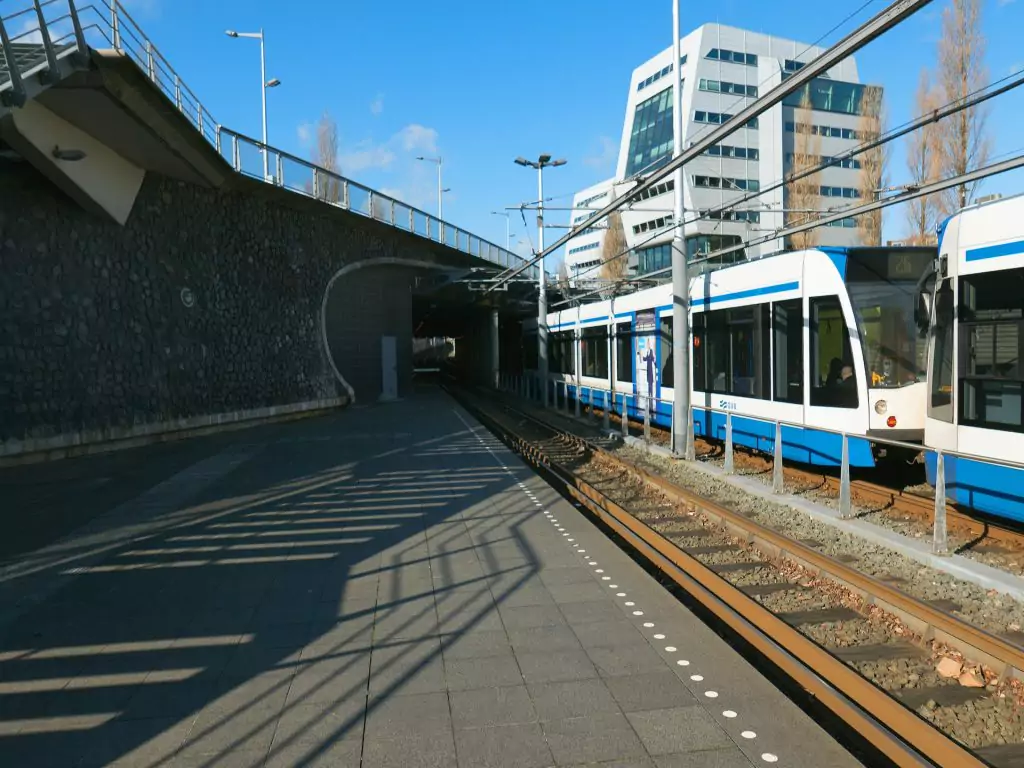
While Amsterdam boasts a pretty diverse and efficient public transportation network – composed of trams, buses, the metro and even ferries – the truth is that you’ll hardly need to use any of it! After all, the whole country is incredibly flat and has barely any elevation (they don’t get called “the Low Countries” for nothing), so you can walk pretty much everywhere in Amsterdam without it requiring too much effort. Plus, considering the Dutch capital is one of the bike-friendliest cities on Earth, you may also choose to rent a bike and crisscross around the city.
Be that as it may, and especially if you’re staying outside the city center, the tram is definitely the most useful public transport for tourists visiting Amsterdam, so it’s definitely worth getting a quick overview of how to navigate it.
Tram in Amsterdam – Map, Fares and Times

Made up of 14 lines and 500 different stops, Amsterdam’s tram network is one of the most extensive in all of Europe. Although you don’t really need to use the tram (or any other public transport) when exploring the city center, it can be quite useful if you need to travel between the downtown and the outskirts. Plus, the system is perfectly integrated into Google Maps, letting you know in real time which tram to take, where and when. Still, if you want to manage your stamina and take the tram in Amsterdam-Centrum, you’ll have to go with line 2, which is famous for passing through some of the city’s most popular sites, such as the Bloemenmarkt, the Rijksmuseum, the Royal Palace or the Canal Ring.
The tram operates every day from 06h00 to midnight 00h30, with waiting times ranging from 5 to 10 minutes.
As for tickets, the whole system seems unnecessarily complicated for visitors. Long-story-short: just use your payment card (credit or debit) as a ticket, scanning it both when you enter and leave the tram, and the fare will be automatically deducted from your balance. If that’s not an option, then you’ll need to get an OV-chipkaart or a GVB 1-hour ticket. What’s the problem – you might ask? Well, for the chipkaart you’ll have to actually visit a GVB service point, pay a €7,50 fee for the card alone and top it up with a minimum balance of €20,00! As for the 1-hour ticket, you’ll pay an inflated fare of €3,40 pe trip. That said, if you simply use your payment card you won’t have to waste any time and you’ll be charged the same fare system as that of chipkaart holders, which is based on distance traveled. Currently, fares start at €1,08 for the boarding fee. Afterwards, installments of 0,196€ are added for each kilometer.
That being said, if you plan on using the tram frequently, it’s worth looking into the daily and multi-day options available:
- 24 hours: €9,00
- 48 hours: €15,00
- 72 hours: €21,00
- 96 hours: €26,50
- 120 hours s: €33,00
- 144 hours: €37,50
- 168 hours: €41,00
Renting a bike in Amsterdam
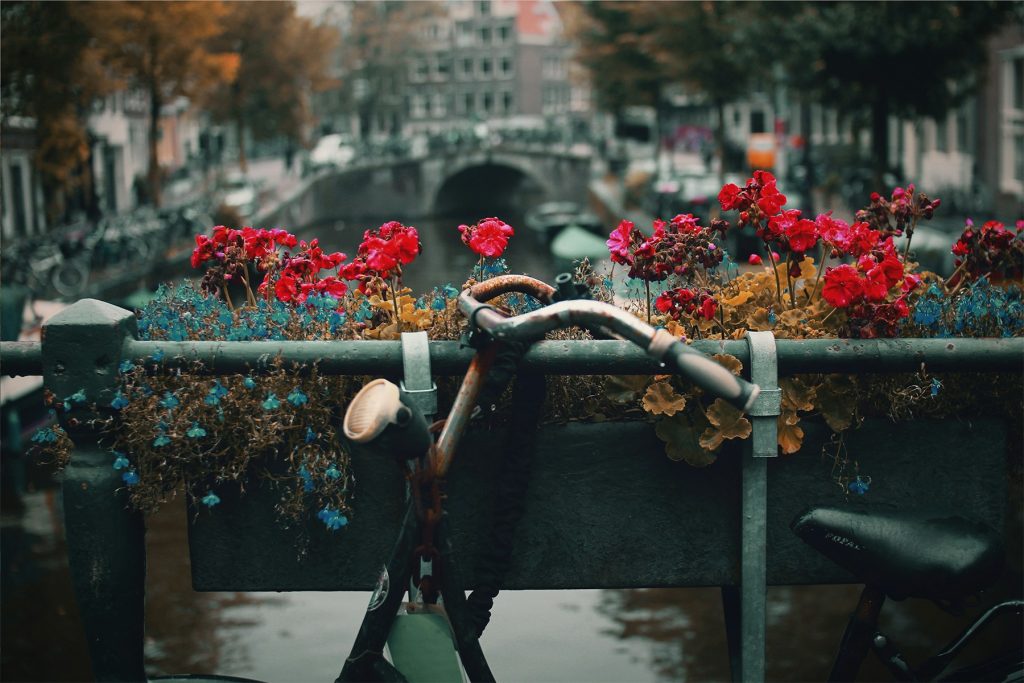
An element that has practically become a symbol of Amsterdam, you won’t be able to walk through the city without coming across thousands of bikes every single day. Especially in the central districts where the narrow streets and canals make car travel more difficult, bikes are the go-to mode of transport and an integral part of Dutch culture. Even for visitors who wish to hop from one place to another hassle-free, renting a bike is an excellent way to get around, as the flat terrain and well-organized city layout make cycling easy both physically and mentally.
Be that as it may, there are a few important rules to follow. Unlike what you might be familiar with back at home, local bikers aren’t just exercising or cycling leisurely, since Dutch people use their bikes as a primary means of commuting to work, school, medical appointments or any other errand/commitment. As such, treat cycling like you would driving: obey traffic laws, stay out of pedestrian and motor vehicle lanes, avoid blocking traffic unnecessarily and don’t use your phone while cycling (you can get a fine of around €95,00)! Plus, considering the city’s serious case of overtourism and the Dutch usually blunt and straightforward attitude, it’s very likely they won’t have the disposition or patience to deal with your mistakes.
Nonetheless, if you feel comfortable on two wheels, renting a bike can be a great way to explore. Luckily, there are countless bike rental shops all over Amsterdam! Most charge a daily flat rate (usually between €10,00 and €15,00), and you can add optional insurance for theft and damages. You’ll also need to leave a deposit (typically around €50,00), which will be refunded when you return the bike. You’ll also get a lock when you rent your bike so that you can safely secure it whenever you park. Play it safe – it’s common knowledge that bike theft in Amsterdam is rampant! On a final note, make sure to park only in designated areas, as leaving your bike in random spots could result in it being “towed” by local authorities.
With these tips in mind, here are a few recommended bike rental shops you can check out in Amsterdam:
Amsterdam 3-day Travel Guide – Free walking tours

While in Amsterdam, you have the option to explore the city with a free walking tour. These tours, led by local guides or tour companies, offer guided visits to the historic center, sharing intriguing stories about each place and providing valuable cultural context. Even though these tours are technically free, it’s customary to show appreciation for the guide’s efforts by leaving a tip at the end. In Amsterdam, a reasonable minimum tip would be around €10,00.
That being said, here are a few companies that run free walking tours in Amsterdam:
Coffee shops in Amsterdam

Disclaimer: Needless to say, we do not condone the use of any drugs. However, we are perfectly aware that many visitors – probably moved by curiosity – would like to try hash and/or weed when in Amsterdam. For the sake of anyone wishing to partake, we believe it is best to do so in a safe environment where you know exactly what you’re buying.
If you’re planning to explore the liberalized soft drug scene that the Netherlands (and especially Amsterdam) is so well-known for, it’s essential to know where to buy your weed, hash and other cannabis-related products. Unfortunately, the popularity of these products/services among tourists is so widespread it has led to coffee shops popping up everywhere (and no, people aren’t going in for the coffee), many of which with questionable quality and dubious reputation. In fact, the situation has gotten so out of hand that authorities have considered banning the sale of weed and hash to tourists, a proposal that hasn’t been implemented yet due to pushback from the industry.
Either way, and to ensure you’re not getting poor quality products (some potentially harmful) at highly inflated prices, here are some coffee shops in Amsterdam we recommend:
Original Dampkring: We kick things off with what is arguably the most famous coffee shop in all of Amsterdam. With a relaxed vibe, a welcoming space and top-quality products, it’s easy to see why it’s so popular.
Smokey: A great choice for those looking to enjoy a night out and unwind, this coffee shop is located right next to a bar/club, meaning you can bounce between music and weed. It’s also a chill place to hang out with friends before heading out for the evening.
Siberie: One of the most charming spots on the list, Siberie can be found in the Canal Ring, so it boasts the most picturesque location of all the coffee shops we highlighted. Besides, prices are quite light on the wallet too, with the cheapest weed and hash starting at €5,00/g and pre-rolled joints from €4,00 each.
Grey Area: Snoop Dogg has smoked here… is there a better endorsement for a coffee shop? If it’s good enough for one of the world’s most famous cannabis enthusiasts, it’ll more than meet the expectations of even the pickiest tourists.
Prix d’Ami: Our final recommendation, when you visit this coffee shop you can have breakfast or brunch, smoke (or try a space cake) and then enjoy your trip on a chaise lounge while watching a movie in the establishment’s very own cinema.
Amsterdam 3-day Travel Guide – Hidden Treasures
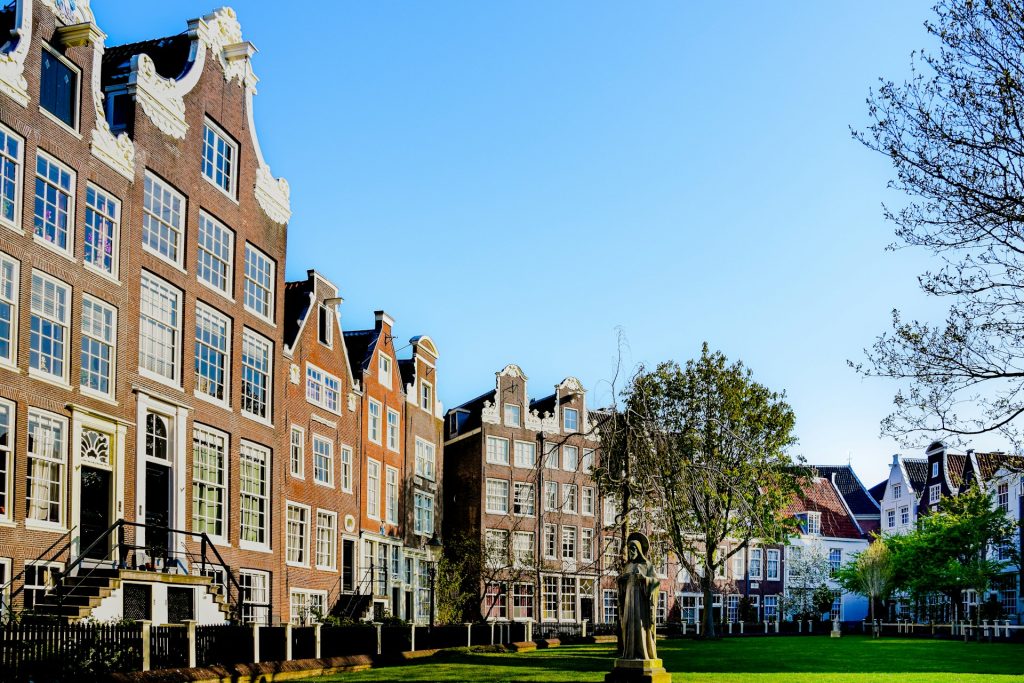
Despite its unmitigated fame, with 3 full days in Amsterdam you’ll have enough time to cover the city’s main highlights without having to rush too much (unless you’re reeeeally into museums). That being said, if you’re keen on making some quick detours, it’s perfectly possible to at least check out a handful of places that might otherwise fly under the radar.
That being said, and because we believe a good traveler must always be able to explore beyond the obvious, we wanted to add a few more obscure places to your list of things to see and do in Amsterdam in 3 days:
Rijksmuseum Gardens: Even though entry to the Rijksmuseum requires a fee (and a hefty one for that matter!), its gardens are a delightful oasis that won’t cost you a thing! Adorned with sculptures, serene ponds and remnants of ancient Dutch monuments, these gardens create a pretty distinct look, with the magnificent façade of the museum serving as a stunning backdrop.
Hortus Botanicus Amsterdam: One of the oldest botanical gardens in the world, it’s definitely worth a visit to explore its rare collection of exotic plants and medicinal herbs. Plus, the space itself is also noteworthy, boasting a stunning blend of traditional Dutch architecture and modern mirrored pavilions.
Westergas: Once one of the main industrial compounds in Amsterdam, this former gas factory complex has been transformed into a vibrant cultural and entrepreneurial hub, filled with restaurants, bars, tiny markets and all kinds of events taking place every month.
NDSM: Another prominent cultural center, this time through the renovation and refurbishment of an old shipyard just north of Central Station. The space is great but the trip there is definitely part of the fun, as it includes a ride on one of the free GVB ferries.
Begijnhof: Arguably, the most famous hofje in the city – charming little courtyards surrounded by historic residential buildings. Once a religious complex where women took vows of seclusion, the Begijnhof now offers a serene garden, a rare gem of a church and the oldest house in all of Amsterdam.
Amsterdam 3-Day Travel Guide – What to See and Do in 72 Hours
As mentioned above, 3 days is the perfect time to experience the very best Amsterdam has to offer. So, and with a full 72 hours, you can visit the world-famous House of Anne Frank, explore the picturesque districts of Jordaan and De 9 Straatjes, see what the Red Light District is all about, appreciate some of the best art in the world at the Rijksmuseum, feel the wonderful scent of tulips at Bloemenmarkt and photograph to your heart’s content in the extraordinary Canal Ring (Grachtengordel).
Without further ado, here’s what to see and do in Amsterdam in 3 days:
Amsterdam 3-Day Travel Guide – Day 1: Amsterdam-Centrum e o Red Light District

While Amsterdam has several tourist hubs, the majority of its key attractions and activities are centered in the district of Amsterdam-Centrum, which forms a semicircular group of islands surrounded by the Singelgracht. However, this is a pretty large area, so you’ll need at least a couple of days to explore its main historical landmarks. Therefore, you’ll start your journey at Amsterdam Centraal, the country’s largest railway station, one of the city’s most iconic buildings and, for many visitors, the first place they see upon arriving in the Dutch capital. In fact, this very station marks the starting point of Damrak, the main thoroughfare that goes through the city’s central island and is filled to the brim with traditional Dutch architecture. While you’re at it, be sure to wander through some of the pedestrian backstreets – like Nieuwendijk and Eggertstraat – which are lined with loads of local shops and restaurants. Plus, don’t miss nearby highlights like the Basilica of Saint Nicholas, Amsterdam’s main Catholic church, and the Oude Kerk, the city’s oldest Protestant cathedral. Curiously, the Dutch have steered away from religion so much that this place of worship has been repurposed as an exhibition space. Still, the best part is the chance to climb the tower (€13,50; open from April to September), as the views over the historic center are nothing short of breathtaking.

Between these two religious landmarks, take the time to visit the Museum Ons’ Lieve Heer op Solder (€16,50), one of the city’s most unique institutions. What seems like just yet another random canal building is actually the bearer of an extraordinary secret. After the Protestant Reformation was introduced in the Netherlands in the 17th century, local authorities sought to ban any non-Protestant worship (especially Catholic rites) from public life. As a result, believers of other religions had to find unusual ways to practice their faith, one of which involved converting ordinary buildings into hidden churches and temples. This museum – translated as “Our Lord in the Attic” – is the most famous example, featuring an impromptu Catholic church spread across the building’s three floors. Definitely one of the most surprising places in the Dutch capital! Back on Damrak, the avenue will bring you to Dam Square, considered the heart of the city, and known for housing the Royal Palace of Amsterdam (€12,50). In traditional Lutheran fashion, this building originally served as the Town Hall, having been repurposed as a palace many years later. Today, it’s one of the official residences of the Dutch royal family and one of the preferred places for official state receptions (its interiors are worth the tour!)
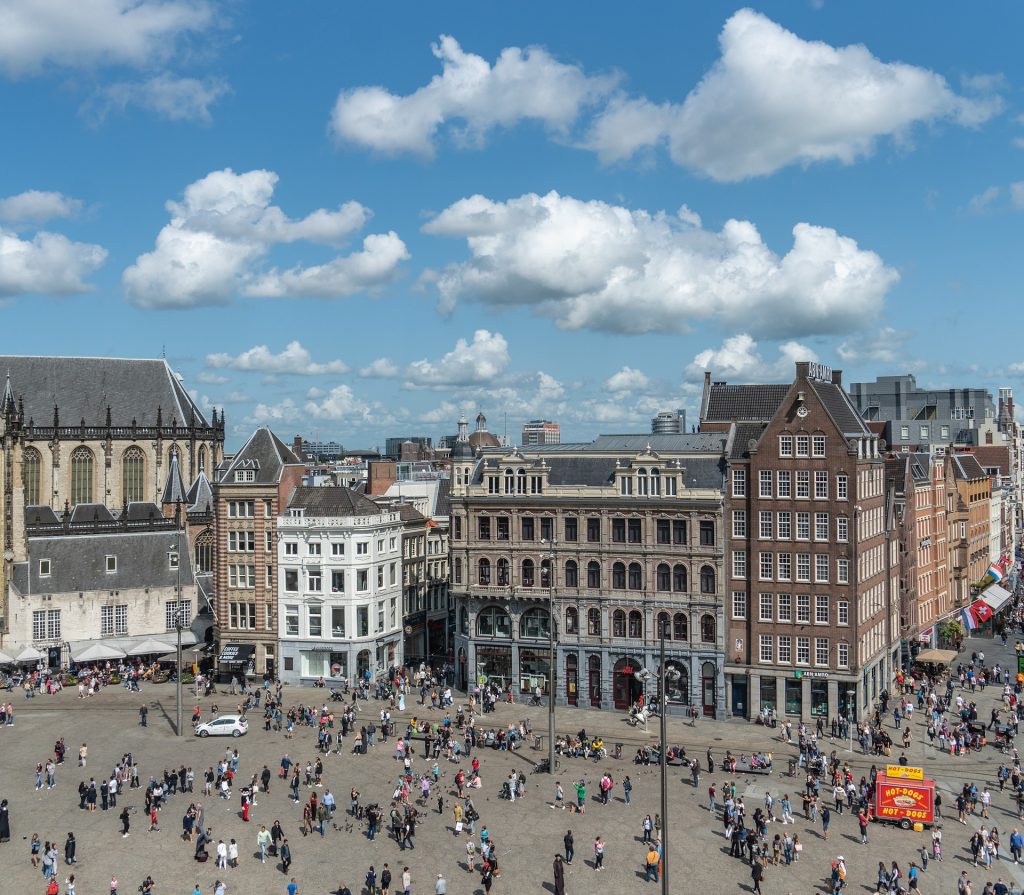
After touring the palace, head south to the Begijnhof, Arguably, the most famous hofje in the city – charming little courtyards surrounded by historic residential buildings. Once a religious complex where women took vows of seclusion, the Begijnhof now offers a serene garden, a rare gem of a church and the oldest house in all of Amsterdam. For our art lovers reading this article, the next stop is a must! Since the Netherlands (and particularly Amsterdam), were home to many great painters and classical artists, it’s very easy to find institutions dedicated to the lives and work of characters such as Van Gogh, Vermeer, Bosch or Pieter Bruegel. However, the next point on your itinerary is the Rembrandt House Museum (€19,50), where the legendary painter lived for 20 years. Now, you can now visit Rembrandt’s living quarters, his studios and the workshops where he created some of his most iconic works, offering a unique glimpse into the daily life and mind of a genius. Finally, as the day winds down, you’ll stop for dinner before the inevitable visit to the Red Light District, known locally as De Wallen. First and foremost, it’s important to understand that the term “Red Light District” refers to any neighborhood – irrespective of the city – where there’s a prominent concentration of brothels, sex shops or other adult-oriented establishments. In fact, Red Light Districts can be found in various cities worldwide, from Hamburg to Bangkok, Paris to Tokyo. However, the fame of Amsterdam’s De Wallen district has reached such global proportions that the term “Red Light District” automatically became synonymous with this specific neighborhood in the Dutch capital.

First day wrap-up:
- Amsterdam Centraal
- Basilica of Saint Nicholas
- Museum Ons’ Lieve Heer op Solder
- Oude Kerk
- Damrak
- Nieuwendijk and Eggertstraat Streets
- Dam Square
- Royal Palace of Amsterdam
- Begijnhof
- Rembrandt House Museum
- Red Light District
Where to eat in Amsterdam – Best restaurants in Amsterdam-Centrum
- Nam Kee (Chinese)
- Bird Thais Restaurant (Thai)
- Tasty Asia (Asian)
- Burgermeester | Centrum (hamburgers)
- Rob Wigboldus Vishandel (traditional herring sandwiches)
- Toastable Nieuwendijk (sandwiches and toasts)
- Ivy & Bros (toasts, quesadillas and frittatas)
- Omelegg (eggs and omelets)
- Café ‘t Gasthuys (varied)
- Cultureel Eetcafé ‘Skek (varied)
Amsterdam 3-Day Travel Guide – Day 2: Jordaan, De 9 Straatjes and the Canal Ring
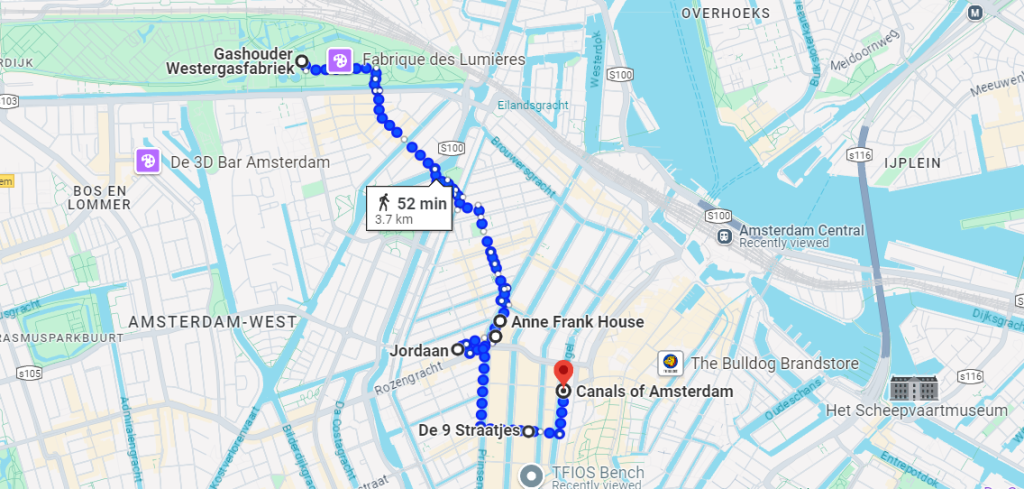
If the first stage of this adventure had you hopping from one attraction to the next, today the pace will be much more relaxed, allowing you to explore the rest of Amsterdam-Centrum and visit some of the trendiest and most picturesque neighborhoods in the Dutch capital. However, the day will kick off further north at the relatively unknown and unexplored Westergas. Once one of the main industrial compounds in Amsterdam, this former gas factory complex has been transformed into a vibrant cultural and entrepreneurial hub, filled with restaurants, bars, tiny markets and all kinds of events taking place every month. After a lively and cheerful start to the morning, it’s time for a much more somber experience at what is perhaps the most iconic tourist attraction in all of Amsterdam: the Anne Frank House (€16,00). There isn’t much more to add about this site that hasn’t already been said. The author of the diary that would become one of the most-read books in history, Anne Frank was a Jewish teenager who, during the Nazi occupation of the Netherlands, had to live in hiding with her family for two years in the attic of this building, originally the warehouse for her father’s (Otto Frank) business. Tragically, the family was eventually discovered and sent to different concentration camps, with Otto emerging at the end of World War II as the single survivor. At the house, you can learn about the Frank family’s story and the Nazi anti-Semitic persecutions in the country, as well as visit the hidden annexes where they lived in secrecy. An important note is that tickets are not available for purchase on-site, so it is essential to buy them online in advance. Normally, tickets are released six weeks ahead of time, so it’s advisable not to wait until the last minute to make your purchase.

To brighten up the mood, make a quick stop at Westerkerk, one of the city’s most beautiful churches, before venturing out to explore the stunning neighborhood of Jordaan. Originally a working-class neighborhood, the Jordaan has undergone significant gentrification and is now considered one of the most coveted and expensive areas in the country. As you wander through its charming streets, picturesque bridges and serene canals, you’ll be greeted by a tremendous variety of restaurants, bars, art galleries and adorable little outdoor markets. If you want to get a taste of the commercial Amsterdam that gets portrayed in postcards, then this is the place to be! Adjacent to the Jordaan is another charming neighborhood well worth visiting: De 9 Straatjes. First established as a bustling commercial area in the 17th century, this quarter stands as a collection of nine streets (its Dutch name) whose names still reflect their historical trades and specialties, specifically related to the bustling fur industry that once thrived there. Hence the reason why you can still walk along “Leather Street”, “Cow Street”, “Wolf Street” or “Bear Street”, each originally dedicated to a specific type of skin/fur. Rather than simply checking off attractions from your never-ending wish list, De 9 Straatjes is a place for a leisurely, carefree walk. As you explore these two traditional districts, you’ll also be traversing the iconic Canal Ring (Grachtengordel). Known as the most beautiful and central set of canals in Amsterdam, the Canal Belt weaves through the historic center, and right along the popular tourist areas of the Dutch capital. In fact, if you search for pictures of Amsterdam’s legendary canals, you’re almost guaranteed to come across captivating images of the belt – composed of Herengracht, Keizersgracht, Prinsengracht, and Singel.

Second day wrap-up:
- Westergas
- Anne Frank House
- Westerkerk
- Jordaan
- De 9 Straatjes
- Canal Ring
- Herengracht
- Keizersgracht
- Prinsengracht
- Singel
Where to eat in Amsterdam – Best restaurants in Jordaan e De 9 Straatjes
- Sefa Grill Restaurant (Turkish)
- The Madras Diaries (Indian)
- Fou Fow Ramen (Japanese)
- The Lebanese Sajeria (Manoushe – Lebanese)
- La Perla Pizzeria (pizza)
- Pizza Beppe Spui (pizza)
- Frens Haringhandel (Herring – traditional snack)
- Greenwoods Keizersgracht (brunch)
- Foodware (take-away meals)
- Fabel Friet (fries)
Amsterdam 3-Day Travel Guide – Day 3: Jewish Cultural Quarter and Museumplein

And just like that, we’ve come to the final day of your Amsterdam itinerary. But there’s no need for tears just yet, as there’s still a lot to see and do, starting with one of the city’s best-kept secrets! Known as the Hortus Botanicus (€13,50), this is one of the oldest botanical gardens in the world and well worth the detour to explore its rare collection of exotic plants and medicinal herbs. Plus, the space itself is also noteworthy, boasting a stunning blend of traditional Dutch architecture and modern mirrored pavilions. While we’ve already talked about Anne Frank, it’s important to note that Amsterdam also boasts a Jewish District, which served as the heart of the city’s vibrant semitic community. Although the Jewish population in the Dutch capital has significantly declined from its peak, the area – nowadays known as the Jewish Cultural Quarter – is home to several institutions dedicated to preserving its historical heritage, such as the Jewish Museum, the National Holocaust Museum (€20,00), and the stunning Portuguese Synagogue, built and funded by Sephardic Jews who flew Portugal during the Inquisition. You can purchase a “combiticket” for all three attractions for €30,00, or a “duoticket” for the synagogue and the Jewish Museum for €20,00. Outside the district, make sure to check out the Bloemenmarkt, the most famous flower market in Amsterdam. Yeah, it’s super touristy and gentrified, but entry is free and photographing the flowers won’t cost you a dime!
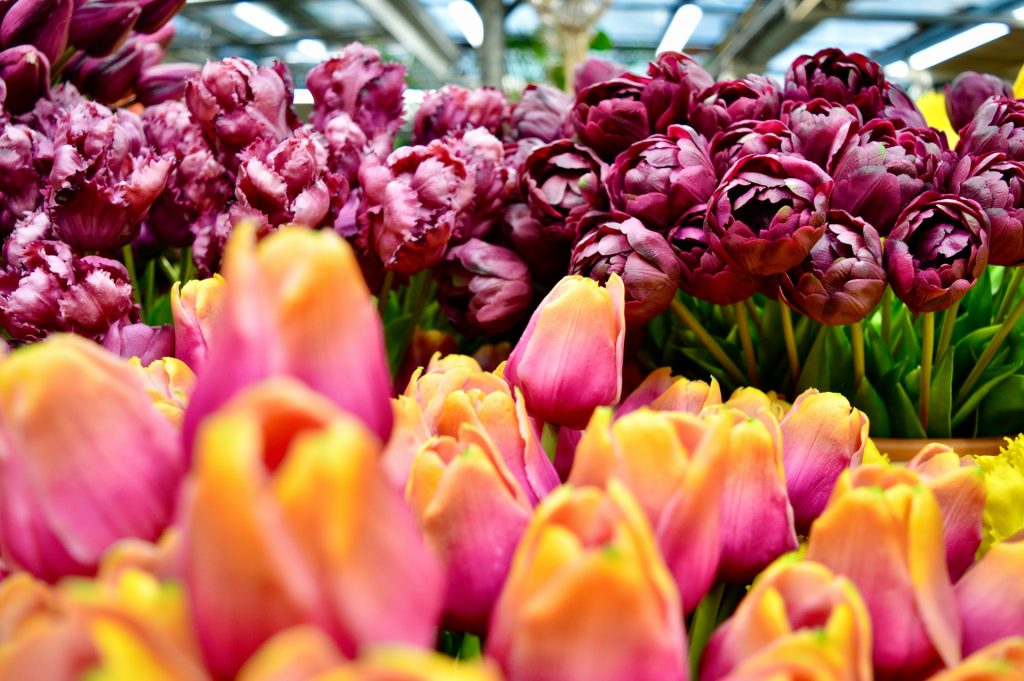
Heading a few kilometers down south and officially leaving Amsterdam-Centrum for good, you’ll end your adventure with a series of world-class museums. However, don’t think this will be all paintings and artworks, as your first stop is the well-known Heineken Experience (€23,00), the ideal destination for beer enthusiasts! Home to the brand’s oldest brewery, this venue offers a vast interactive exhibition on the history and brewing processes of one of the most famous beers in the world. Plus, your ticket includes two drinks – definitely a great way to convince your boyfriend to join in on this journey! On the other hand, for those interested in more traditional museums, Museumplein – the largest square in Amsterdam, where the infamous “I Amsterdam” sign used to stand – is surrounded by some of the city’s most renowned cultural institutions. Here, you can choose to visit the Van Gogh Museum (€22.00), dedicated to the life and works of the most celebrated Dutch artist; or the Rijksmuseum (€22.50), consistently hailed as one of the best museums on planet Earth. If you decide on the latter, be sure to check out the Cuypers Library, a beautiful library often overlooked by many visitors. Regardless of your choice, don’t forget to take a quick walk along the Rijksmuseum Gardens. Adorned with sculptures, serene ponds and remnants of ancient Dutch monuments, these gardens create a pretty distinct look, with the magnificent façade of the museum serving as a stunning backdrop. Finally, and since we’re on the topic of parks and gardens, you’ll wrap up your city-break at Vondelpark, the largest green space in Amsterdam.
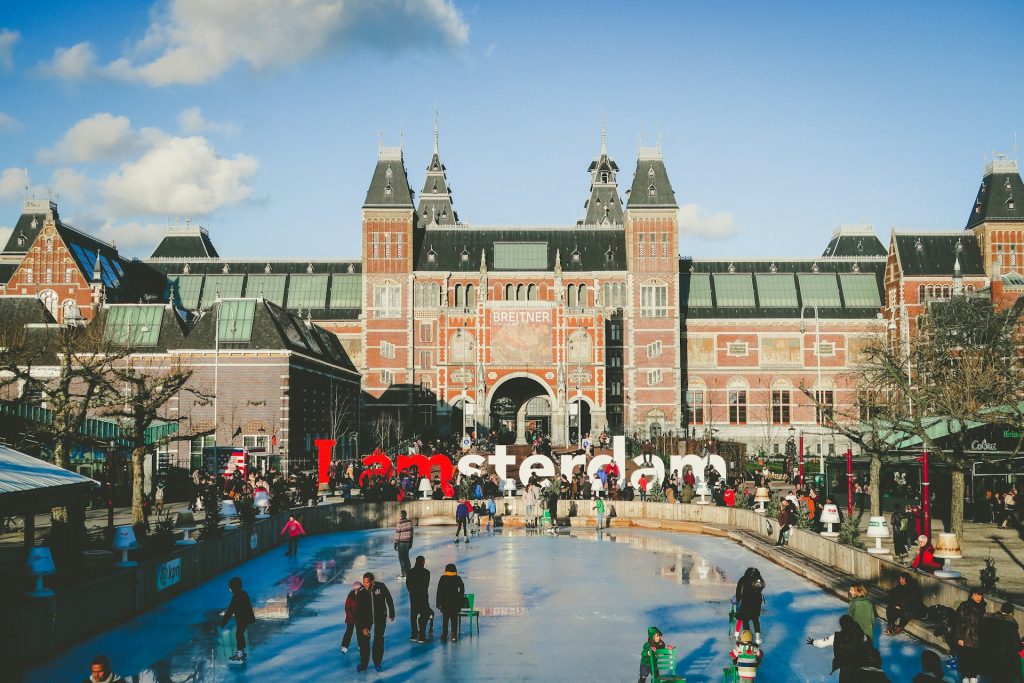
Third day wrap-up:
- Hortus Botanicus
- Jewish Cultural Quarter
- Jewish Museum
- Nacional Holocaust Museum
- Portuguese Synagogue
- Bloemenmarkt
- Heineken Experience
- Museumplein
- Van Gogh Museum OR Rijksmuseum (+ Cuypers Library)
- Rijksmuseum Gardens
- Vondelpark
Where to eat in Amsterdam – Best restaurants in Museumkwartier and near Vondelpark
- Hap Hmm (Dutch traditional)
- Pho 91 (Vietnamese)
- Lalibela Restaurant (Ethiopian)
- Pizza Project (pizza)
- Sir Pita (pita bread sandwiches and hummus)
- Spaghetteria Caffè (pasta)
- Benny’s Chicken (chicken restaurant)
- Café Lennep (varied)
- Peperwortel (varied)
- Rudi’s Original Stroopwafels (stroopwafels)
Got more than 3 days in Amsterdam? Then you might want to check out these amazing day trips from the city

Utrecht: For many the second most beautiful city in the Netherlands, Utrecht offers the same charm of Amsterdam’s canals and traditional architecture but with fewer crowds and lower prices. The best way to explore Utrecht is by strolling through its Old Town, where you can discover landmarks such as St. Martin’s Cathedral, De Haar Castle, the Oudegracht and the Domtoren.
Leiden: A mere 25-minute train ride from Amsterdam, the university city of Leiden is a peaceful alternative to the busy capital. Explore the castle, wander through the historic city center and – if you happen to visit in the Spring – be sure to check out the vibrant flower markets, as Leiden is one of the country’s main flower trade hubs.
Delft and The Hague: Though we’re talking about two separate cities, it’s still perfectly possible to combine Delft and The Hague in a day, as these are just 9 km apart. The former is one of the loveliest towns in the Netherlands and is known for its beautiful Main Square (Markt) and its iconic Delftware ceramics. As for The Hague, the political heart of the country and home to the International Court of Justice, highlights include the historic quarter of Binnenhof and its Ridderzaal, along with a number of world-class art museums.
Zaanse Schans: One of the most popular day trips from Amsterdam, this district of the city of Zaandam is a true open-air museum, since dozens of historic wooden buildings and windmills have been relocated here from all over the country’s northern provinces. The end result is a faithful recreation of an 18th and 19th-century Dutch village.
Keukenhof Gardens: Last but certainly not least, here’s one of the most breathtaking gardens in the world. If the Netherlands are known for their flowers, the Keukenhof Gardens are the ultimate showcase of how you can turn this natural element into an art form. However, that also means this is a seasonal attraction, open only for about two months each year (usually from March to May). Still, if your trip matches this timeframe, visiting the Keukenhof is a no-brainer!
Traveling soon? Get your Holafly eSIM for unlimited internet access in any destination. No more worrying about roaming charges or finding local SIM cards. Enjoy unlimited data and stay connected with ease. Order your Holafly eSIM now »
Heymondo offers a wide range of travel assistance insurance policies. They combine the best quality, service and price with various levels of coverage, so you’re covered on your weekend getaways and long trips. Buy insurance »





